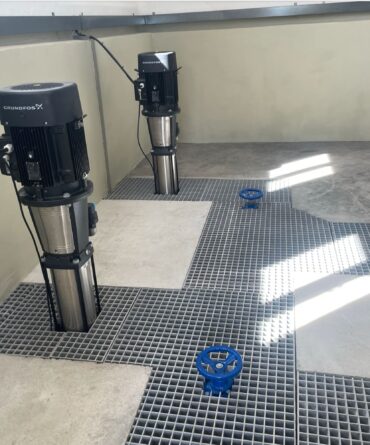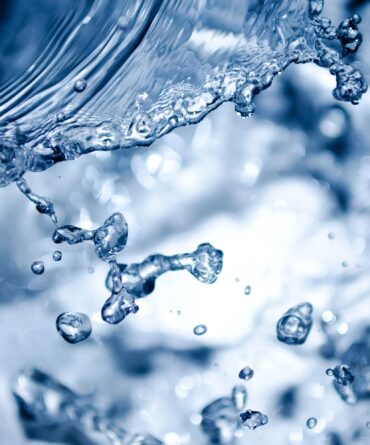Water Management
- Home
- Water Management
Water Management
Challenges of Water Management in Ukraine

As a result of the full-scale war waged by the Russian Federation, approximately 11 million Ukrainians are facing challenges in accessing water, sanitation, and hygiene services.
Ukraine is recognized as one of the countries with relatively low specific water supply, being considered one of the least water-rich countries in Europe. The minimum water supply level set by the UN is 1,700 cubic meters per year per person, whereas in Ukraine, this figure stands at only 1,000 cubic meters. Consequently, there is a continual need for focused attention on the rational and economical utilization of the country’s water resources.
Spring floods are no longer as abundant, and rivers often become shallow or even dry up during the summer months, as observed with the Sula River in the Poltava region. The impact of climate change alone does not fully account for this; the reduction of forest cover in river catchment areas further diminishes their natural water regulation capabilities. Moreover, the construction of numerous ponds, medium, and small reservoirs (over 30 thousand) has led to the loss of the landscape and hydrological complex of approximately 23 thousand small rivers, constituting up to 36% of their total number.
In recent years, the limited water resources have resulted in a twofold decrease in water intake volumes (and transfer to arid regions of the country) from the Dnieper cascade of reservoirs. Additionally, significant water losses during transportation have further compounded the issue, with total losses exceeding 10%, and communal household and drinking water supply systems experiencing losses of over 50%. Efforts to counteract this involve implementing measures to conserve available.

Problems in Odesa Region
The provision of high-quality drinking water and sanitation to all residents of the Odessa region is a challenging task, particularly amidst the ongoing Russian aggression in the country. The associated environmental and humanitarian risks, including the scarcity of clean freshwater, exacerbate this challenge. Despite existing treatment facilities and technologies, some are unable to meet regulatory standards for water cleanliness. Improper agricultural practices, industrial, communal, and agricultural pollution of water bodies, compounded by adverse climate changes, have led to the disappearance of numerous small rivers from Ukraine’s map. Additionally, the degradation of aquatic ecosystems has been observed.
Monitoring of surface reservoirs has revealed little improvement in their ecological condition, with the onset of Russian aggression further deteriorating the situation. The outdated drainage systems in Ukraine compound these issues. Furthermore, the majority of the country’s water supply systems were established several decades ago, using technologies ill-equipped to handle current levels of pollution, resulting in the trophication of water bodies. Of particular concern is the inadequate water supply system in rural areas, where a significant portion of the population lacks access to clean water.
In 2022, a substantial percentage of rural water supply systems failed to meet laboratory standards, exacerbating the issue of water quality in these regions. Changes in government structures and the transfer of rural water supply systems to municipal authorities have further complicated matters, leaving many systems in disrepair and requiring inhabitants to foot repair bills. Centralized water supply systems now serve less than a quarter of Ukraine’s population, leaving the rural populace to rely on wells and individual boreholes, often resulting in unsanitary conditions.
In the same year, a significant proportion of samples from decentralized water supply systems failed to meet standards for both chemical and microbiological indicators, highlighting the widespread nature of the issue. This includes samples from mine wells, which also failed to meet regulatory standards. Additionally, nitrates in drinking water exceeded permissible levels in a considerable percentage of samples, posing health risks to the population.
The use of outdated technologies and inadequate purification methods further compound the problem, resulting in the entry of pollutants into drinking water. Chlorine and ineffective coagulants are commonly used, leading to the ingestion of inorganic and organic contaminants that pose health risks, particularly in regions affected by radiation.
The issue of anthropogenic pollution, including untreated industrial and domestic effluents, remains significant. Phosphate pollution from synthetic detergents and the “blooming” of surface waters exacerbate these challenges, further compromising the quality of drinking water sources.
Non-compliance with regulatory standards for drinking water quality contributes to the spread of various diseases, including gallstones, peptic ulcers, and kidney and bladder diseases. High levels of nitrates in drinking water, even within permissible concentrations, pose health risks, according to scientific research.
In the Odessa region, water is sourced from both surface and underground reservoirs, primarily from the Dniester and Danube rivers. However, many small rivers in the region have become polluted or disappeared entirely. Pipelines transport water from surface sources such as the Dniester and Danube rivers, but inadequate infrastructure and geographical challenges hinder access to clean water in many areas.
Challenges with water supply infrastructure, including aging pipelines and insufficient maintenance, contribute to energy inefficiency and increased costs. In low-lying areas, groundwater often fails to meet national standards due to high levels.

Switzerland as a Model for Water Resource Management
Switzerland stands out as a prime example in water resource management for several reasons:
- Holistic approach:
- Switzerland boasts a robust legal framework dedicated to safeguarding water resources.
- The country continually invests in upgrading infrastructure and adopting innovative technologies.
- The Swiss population is well-informed about the significance of water conservation.
- Source protection:
- Watershed conservation – natural filters such as forests and mountain pastures are diligently preserved.
- Stringent gegulations – Switzerland enforces strict rules concerning wastewater discharge, as well as the use of pesticides and fertilizers.
- Efficient utilization:
- Priority is given to advancements in water purification and reuse technologies.
- The Swiss populace has ingrained habits of using water prudently.
- Accessibility:
- Clean drinking water access is guaranteed for all residents.
- The Swiss government ensures water access irrespective of geographical location.
- International collaboration:
- Switzerland actively shares its expertise and engages in global water projects.
- Scientific Research. Switzerland invests significantly in water resource research to discover novel solutions.
Switzerland’s Accomplishments Include:
- Effective management demonstrated through source protection, rational utilization, and innovative practices.
- Universal access ensuring clean drinking water accessibility for every citizen, regardless of location.
- Global responsibility – Switzerland actively contributes to global water-related challenges by sharing its experiences.
The Swiss model serves as a beacon of inspiration for nations striving to secure access to clean drinking water for their populations.
Best Practices


